Ultimate Website Redesigning Guide for Better Performance
Read the Ultimate Website Redesigning Guide for Better Performance.
Are you looking to make changes to your website that will improve performance and provide a better experience for visitors? If so, this ultimate guide is just what you need!
We’ll provide step-by-step instructions on redesigning your website and maximizing its potential. Plus, we’ll explore the background information of workflow so that you can understand why certain steps are needed.
Whether you’re a beginner or an experienced marketer, this comprehensive resource should have all the information necessary for successful website redesigning. Let’s jump right in and get started today!
Website Redesign

In today’s fast-paced digital world, a website redesign can make all the difference in capturing your audience’s attention. Companies must keep their websites up-to-date with constantly evolving technology and design trends to stay competitive. Rethinking AI Website Design in the Age of the Algorithm
A website redesign can improve user experience, increase traffic, and convert more leads into conversions. Whether you want to enhance your website’s overall look and feel, streamline navigation, or optimize for search engines, a website redesign can help your brand stand out in a crowded online marketplace.
Trust us; your audience will appreciate your effort to make their browsing experience seamless and enjoyable.
Your Blueprint for SEO Success in 2025
Whether you’re a business owner, marketer, or seasoned SEO professional, this guide is tailored to give you a competitive edge in the evolving digital landscape. Get SEO Pricing.
The importance of world-class web design
In today’s digital age, having a top-notch website can make or break a business. World-class web design is crucial for creating a first impression and establishing credibility with potential customers.
A website with poor design can deter visitors and make them feel uneasy about the legitimacy of a company. On the other hand, a well-designed website can enhance user experience, encourage engagement, and ultimately lead to more conversions.
Investing in world-class web design is an investment in your business’s success. With so much competition online, standing out from the crowd with an attractive and functional website is critical. It’s about aesthetics and creating a seamless, intuitive user experience that builds trust and drives results.
Responsive Web Design Is Vital with a Website Redesigning Project

In today’s digital age, having a website easily accessible on all devices is crucial. This is where the significance of responsive web design comes in.
You never know what will come out when you throw your URL into our performance report.
Responsive web design is a website design approach that focuses on creating websites optimized for all screen sizes, whether on desktop, tablet, or smartphone.
With the increasing number of mobile users, a website that needs to be optimized for smartphones or tablets can lead to a negative user experience, result in a high bounce rate, and cause a decline in SEO rankings.
Hence, responsive web design is essential to ensure your website is easily accessible and optimized for all devices.
What is UX design in Your Website Redesigning Project
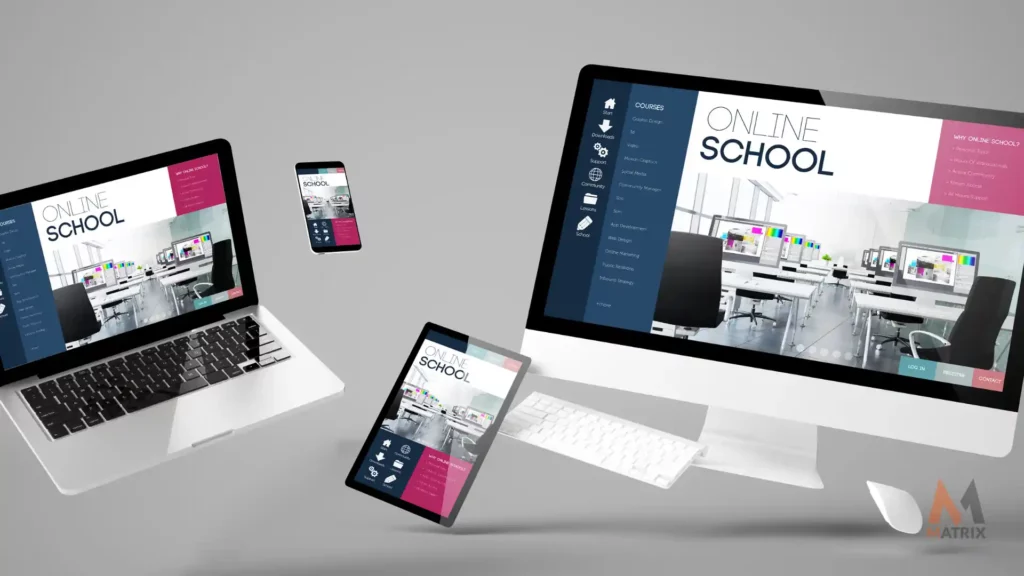
UX design, short for user experience design, is crucial to creating successful digital products. It encompasses designing an intuitive, user-friendly, and engaging product or service.
UX designers focus on understanding the needs and behavior of their target audience and tailor their designs accordingly.
The goal is to create a seamless experience for the user, ensuring they can easily navigate and interact with the product. They employ various techniques such as prototyping, user testing, and user research to achieve this.
Ultimately, good UX design leads to happy users, increased engagement, and higher conversion rates. So, whether you’re designing a website, app, or any other digital product, it’s important to prioritize your user’s experience. UX Website Redesign: Step-by-Step Guide for the Perfect Launch
What is UI design?

At first mention, UI design may sound like a complex topic, and to some extent, it is. User interface design is designing interfaces for electronic devices or software applications with the end user in mind.
Good UI design is all about creating a seamless user experience that allows people to interact with technology in a way that feels effortless and natural, regardless of their level of technical know-how.
This means creating interfaces that are not only visually appealing but also easy to navigate, intuitive, and accessible. Whether it’s a website, mobile app, or desktop software, UI design can distinguish between a product people love using and one they quickly abandon.
What is a Mobile-friendly design? And Your Website Redesigning Project
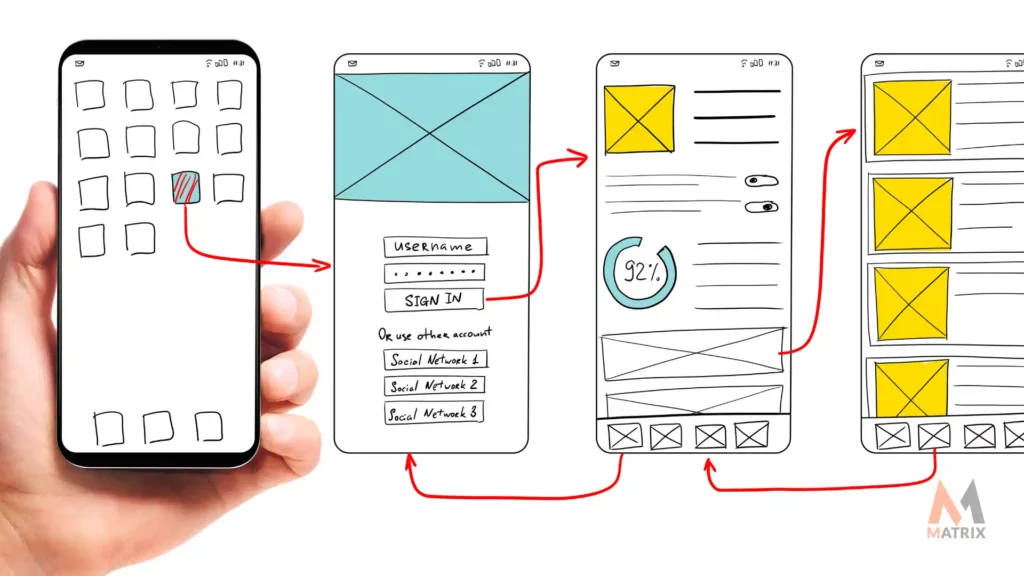
A mobile-friendly website design is optimized for viewing on mobile devices such as smartphones and tablets. Such designs are created to ensure that website visitors have a seamless experience regardless of their device.
These layouts are usually more compact and simpler than desktop versions, yet they have all the website’s essential features. A mobile-friendly website should be designed with smaller screens, considering the users’ navigational needs.
The links should be spaced apart, and the content should be displayed in a legible format. Ensuring your website is mobile-friendly guarantees better user experience, increased traffic, and an improved search engine ranking. Denver Digital Marketing Agencies are Failing Their Clients.
Why Web Development and Design go Hand in Hand

Web Development and Design are two sides of the same coin. They work hand in hand to create a seamless and well-designed website that is both visually appealing and functional.
A web designer is responsible for the look and feel of the website, using their creativity to develop a design that grabs the user’s attention.
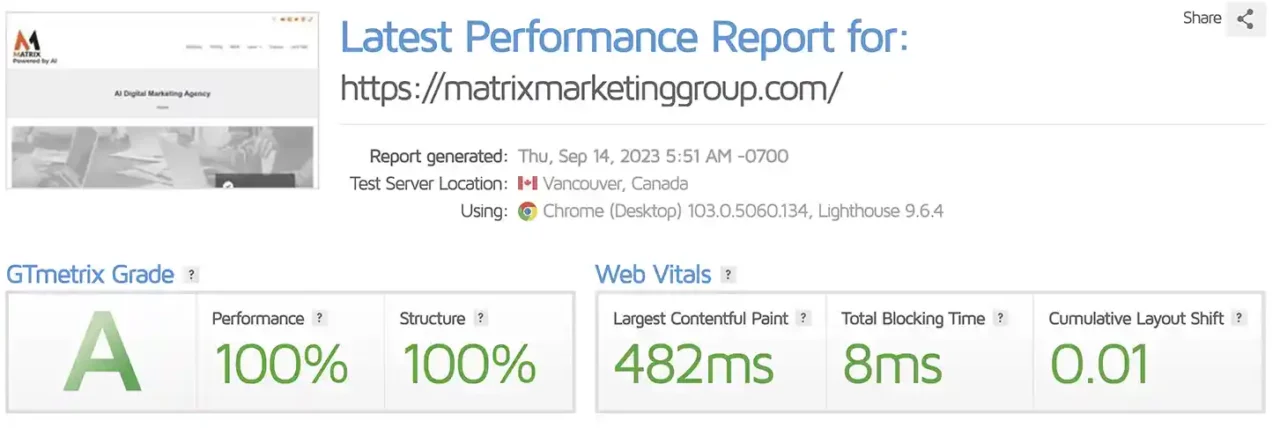
With development, a website may look great but will function as intended. On the other hand, web developers are responsible for the website’s functionality, ensuring everything works as it should. Without design, a website may be functional but unattractive, making it unappealing to users.
Web development and design go hand in hand to create a website that works well, looks great, and provides users with a positive experience.
Understanding the Goals and Objectives of Website Redesign
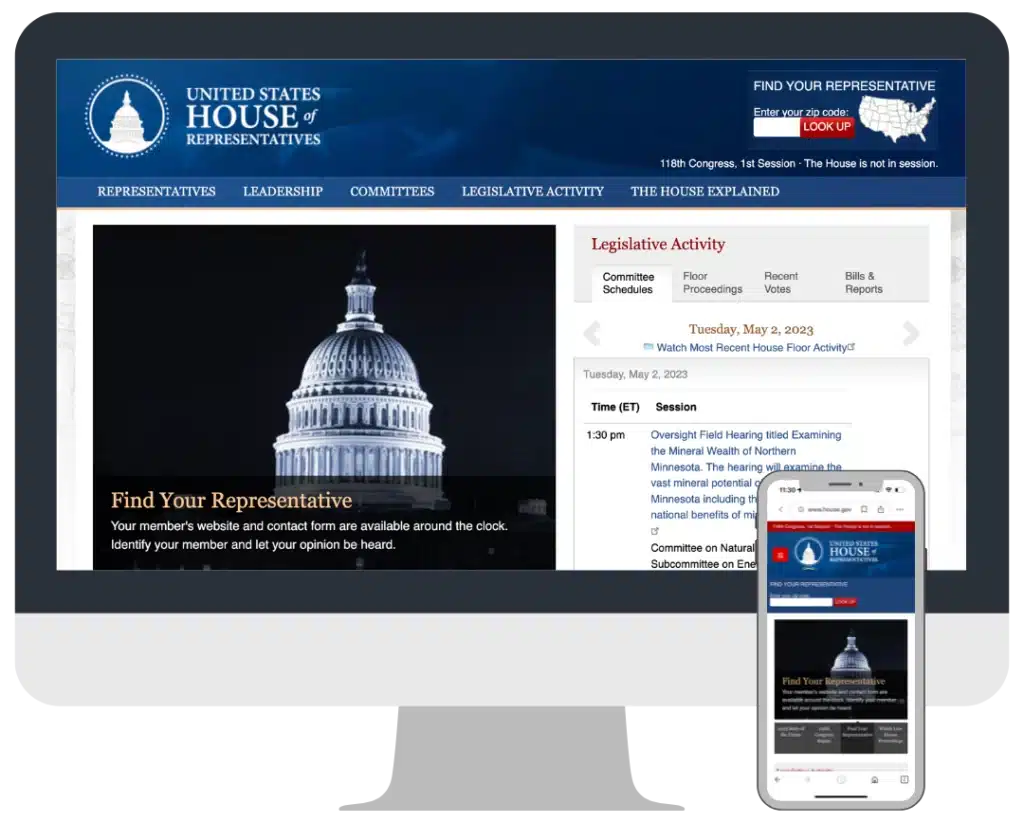
When it comes to website redesign, it’s important to understand the goals and objectives of the project before diving in headfirst. A website redesign can have a variety of purposes, from improving the user experience to increasing website traffic to boosting sales. Are digital marketing agencies failing you?
Whatever the ultimate goal, it’s crucial to clearly understand what you want to achieve before making any changes to your site. This can help ensure your redesign succeeds and delivers the intended results.
A defined set of objectives can guide your decision-making throughout the redesign process, helping you stay focused on what matters.
So if you’re considering a redesign for your website, take the time to consider your goals and objectives carefully – it will pay off in the long run!
Purpose of the Website Makeover and Website Revamp
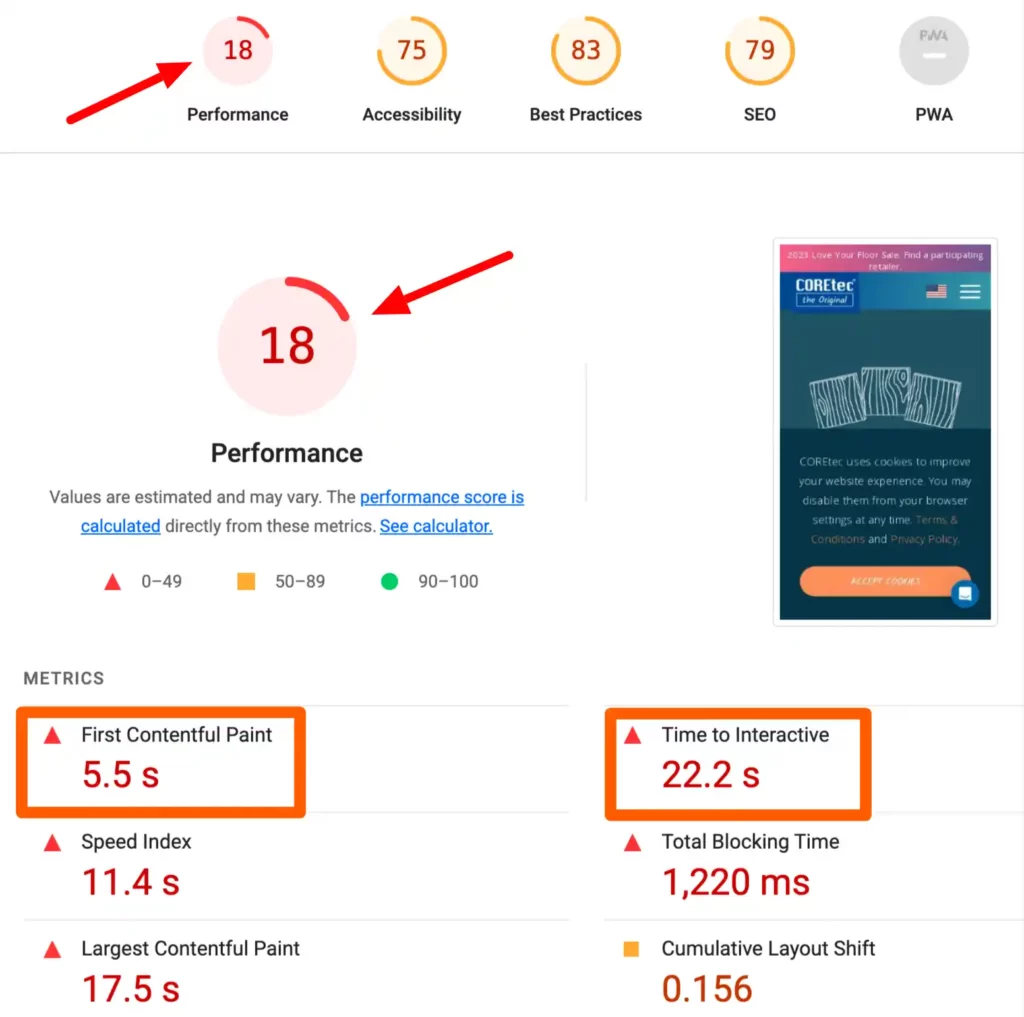
In today’s digital age, having an outdated website is like sporting a mullet. It may have been cool in the past, but now it makes you look behind the times. That’s where website makeovers and revamps come into play.
Their purpose is to breathe new life into your online presence, making it more visually appealing, user-friendly, and relevant.
A website makeover typically involves updating the design elements, such as the color scheme, layout, and images. It may also entail improving the site’s functionality and navigation to make it easier for visitors to find what they want. A 9 Step-by-Step Guide for Redesigning Your Website
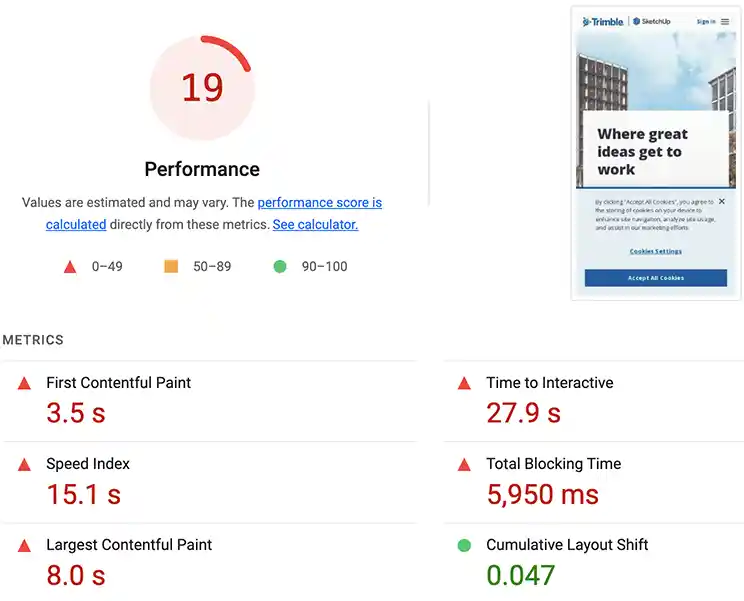
Any website refresh aims to attract more visitors and keep them engaged for longer. So, if your website needs a makeover or revamp, don’t hesitate to give it the much-needed facelift.
On the other hand, a revamp may involve a complete overhaul of the site’s architecture or even a shift towards a more responsive design.
Carry Out an SEO Audit
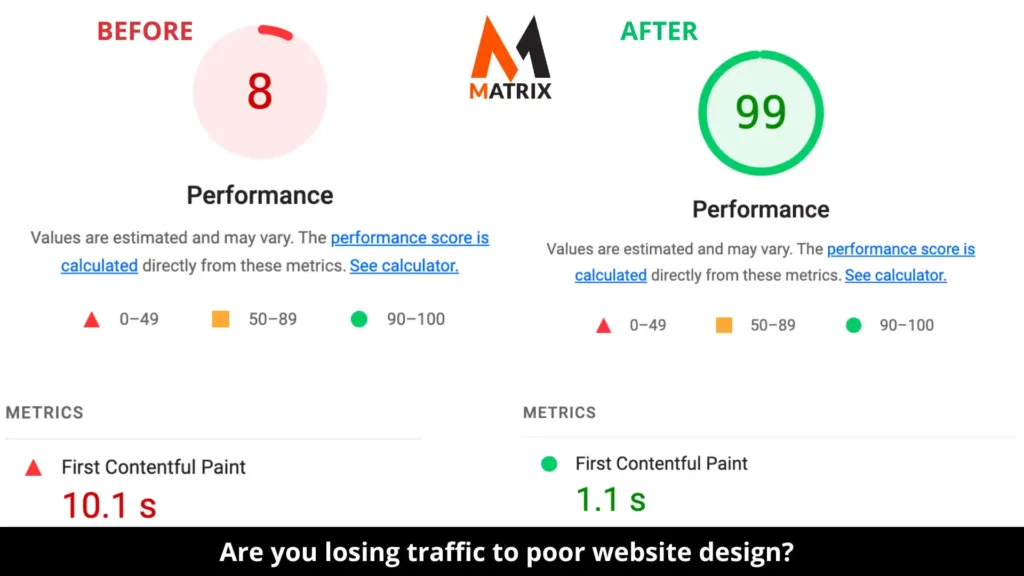
If you want to boost the visibility of your website, conducting an SEO audit is the first step you should take. The audit is a health check for your website’s SEO, where you assess its current level of search engine optimization, its strengths, and its weaknesses.
By conducting an SEO audit, you’ll be better equipped to identify areas that need improvement or attention to improve your website’s ranking and attract more traffic.
Conducting an SEO audit is a critical step in achieving online success. It includes checking your website’s speed and assessing the quality of its content.
Here are the steps to do a website SEO audit
Performing a website SEO (Search Engine Optimization) audit involves evaluating a website’s performance, visibility, and overall adherence to SEO best practices.
The goal is to identify areas for improvement and develop a plan to optimize the site for search engines.
Here is a step-by-step guide to conducting a comprehensive SEO audit:
- Crawl the website: Use tools like Screaming Frog, Sitebulb, or DeepCrawl to gather essential data on website URLs, meta tags, headers, and other on-page elements. These tools help identify broken links, duplicate content, and other technical issues.
- Analyze website structure: Assess the site’s architecture, URL structure, and internal linking to ensure it is easy for users and search engine crawlers to navigate.
- Review on-page SEO elements: Examine meta titles, meta descriptions, header tags, and keyword usage on your web pages to ensure they are optimized for target keywords and follow best practices.
- Check website speed: Use tools like Google PageSpeed Insights, GTmetrix, or WebPageTest to evaluate your website’s loading speed. Slow-loading pages can negatively impact user experience and search engine rankings.
- Inspect mobile-friendliness: Ensure your website is responsive and offers a seamless user experience on mobile devices. Use Google’s Mobile-Friendly Test to assess your site’s mobile performance.
- Evaluate content quality: Review your website’s content for relevance, quality, and originality. Ensure it is well-organized, informative, and provides value to your target audience.
- Analyze keyword targeting: Identify your target keywords and ensure they are used appropriately throughout your site’s content, meta tags, and other on-page elements.
- Assess backlink profile: Use tools like Ahrefs, SEMrush, or Moz to analyze your website’s backlink profile. Identify toxic or low-quality backlinks that may harm your search engine rankings and develop a strategy to acquire high-quality, relevant backlinks.
- Review Google Analytics and Google Search Console: Analyze your website’s organic search performance, user behavior, and other important metrics in Google Analytics. Check Google Search Console for crawl errors, indexation issues, or manual penalties.
- Identify and fix technical SEO issues: Address broken links, 404 errors, duplicate content, incorrect canonical tags, and other technical problems that may affect your website’s search engine performance.
- Create an action plan: Based on your findings, develop a prioritized list of tasks to address the issues discovered during the audit. Implement these changes to improve your website’s SEO performance and overall visibility in search engine results.
Remember that SEO is an ongoing process. It’s essential to continually monitor your website’s performance, make necessary adjustments, and stay up-to-date with the latest SEO trends and best practices.
Research On the Latest Web Design Trends

As technology progresses, so do web design trends. Keeping up with the latest trends is crucial to ensuring your website stays current.
From bold typography to eye-catching animations, various elements can make your website stand out in the increasingly competitive online world. One of the latest trends is to use 3D visuals, as this can add a whole new level of depth and interactivity to a website.
Another popular trend is to use minimalist designs with clean lines and simple color schemes. Whatever design elements you choose, ensuring they align with your brand and user experience goals is important. Keeping up with the latest web design trends allows you to create a great website that meets your audience’s needs.
I can provide you with some recent web design trends. Keep in mind that web design trends are constantly evolving, and what’s popular today may change in the future. Here are some of the latest web design trends that gained traction in 2021 and continue to influence web design:
- Dark mode: Dark mode has become increasingly popular as it offers users an aesthetically pleasing, easy-on-the-eyes experience, especially during night-time browsing. It also helps save battery life on devices with OLED screens.
- Minimalism: Minimalist web design focuses on simplicity, clean lines, and reduced clutter. By using ample whitespace and a limited color palette, minimalist designs create a more intuitive and user-friendly experience.
- 3D elements and immersive experiences: Integrating 3D visuals and animations in web design has grown popular, creating a more immersive and engaging user experience. This includes using 3D models, realistic textures, and interactive elements.
- Asymmetrical layouts and split-screen designs: Moving away from traditional grid layouts, asymmetrical designs, and split-screen formats offer a unique and visually intriguing browsing experience. These designs can also emphasize specific content or calls to action.
- Custom illustrations and hand-drawn elements give a website a unique, personalized touch. These elements can convey complex ideas, add visual interest, or enhance storytelling.
- Neumorphism and glass morphism: Neumorphism is a design trend that combines skeuomorphism and flat design elements, creating a soft, raised appearance using subtle shadows and highlights. Glassmorphism, on the other hand, is characterized by frosted glass-like elements with multi-layered, semi-transparent surfaces and blurred backgrounds.
- Scrolling transformations and parallax effects: Scroll-triggered animations and parallax effects create a sense of depth and interaction, providing a more dynamic and engaging user experience as users navigate the website.
- Microinteractions: Microinteractions are small, functional animations or feedback mechanisms that enhance user engagement and create a more enjoyable browsing experience. Examples include button hover effects, form input animations, and subtle loading indicators.
- Large typography and bold fonts: Oversized, bold typography is used to make a statement and guide users’ attention to important content. This trend often involves the use of unique, custom fonts or typefaces.
- Accessibility and inclusive design: With a growing emphasis on making the web more accessible to everyone, inclusive design practices are being prioritized. This includes appropriate color contrast, readable fonts, keyboard navigation, and clear, concise content.
Remember that trends may have evolved since January 2025, so staying up-to-date with the latest developments in web design is essential. The most effective web designs combine current trends with usability, functionality, and a clear understanding of the target audience’s needs and preferences.
Determine the Type of Content and Structure
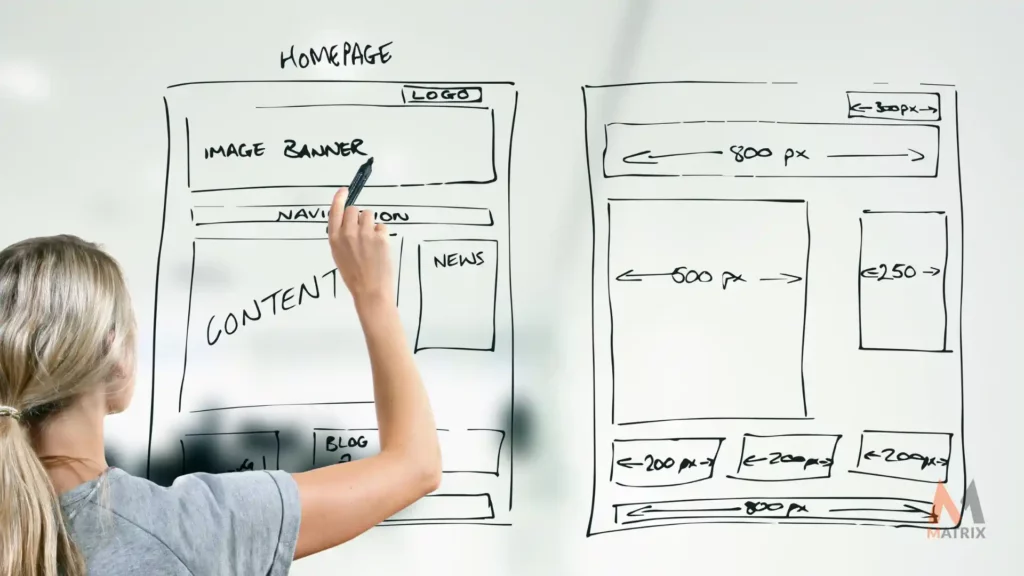
When creating content, it’s essential to determine the type and structure of your message. Knowing your purpose and audience will help you choose the appropriate tone and style for your content. This is where experience and expertise take years of training.
For instance, if you’re writing a how-to guide, the structure will be instructional, while writing a news article will be more informative.
The tone you use in your content will impact how readers perceive your message. If you want to engage your readers, use a conversational or more formal audience looking for more academic or professional content.
Finding the right type, structure, and tone will make your content more compelling and help you reach your audience effectively.
Choose Mobile-Friendly Theme and Responsive Design Layout. We recommend the Frost theme.
When designing a website, there are a few key factors to consider. In today’s digital age, choosing a mobile-friendly theme with a responsive design layout is essential to ensure your site is easily accessible and navigable on all devices, from desktop PCs to tablets and smartphones.
At Frost, we highly recommend our Frost theme, which looks sleek and modern and is optimized for maximum performance across all platforms.
With its flexible design and customizable options, the Frost theme is the perfect choice for any website looking to make a lasting impression on its visitors.
Create a Wireframe for Visualization

As an expert in design and visualization, wireframes are essential to your toolkit. Creating a wireframe is a critical first step to visualizing a design concept, allowing you to map out the user interface and plan for functionality.
With a wireframe, you can identify potential design flaws or gaps in information architecture, ultimately saving you time and money. The job is not solely to create a wireframe but also to ensure that it accurately represents the scope and layout of the design concept.
Therefore, as an expert in the field, your top priority should be ensuring your wireframe effectively communicates your intent.
Website Usability and User Experience
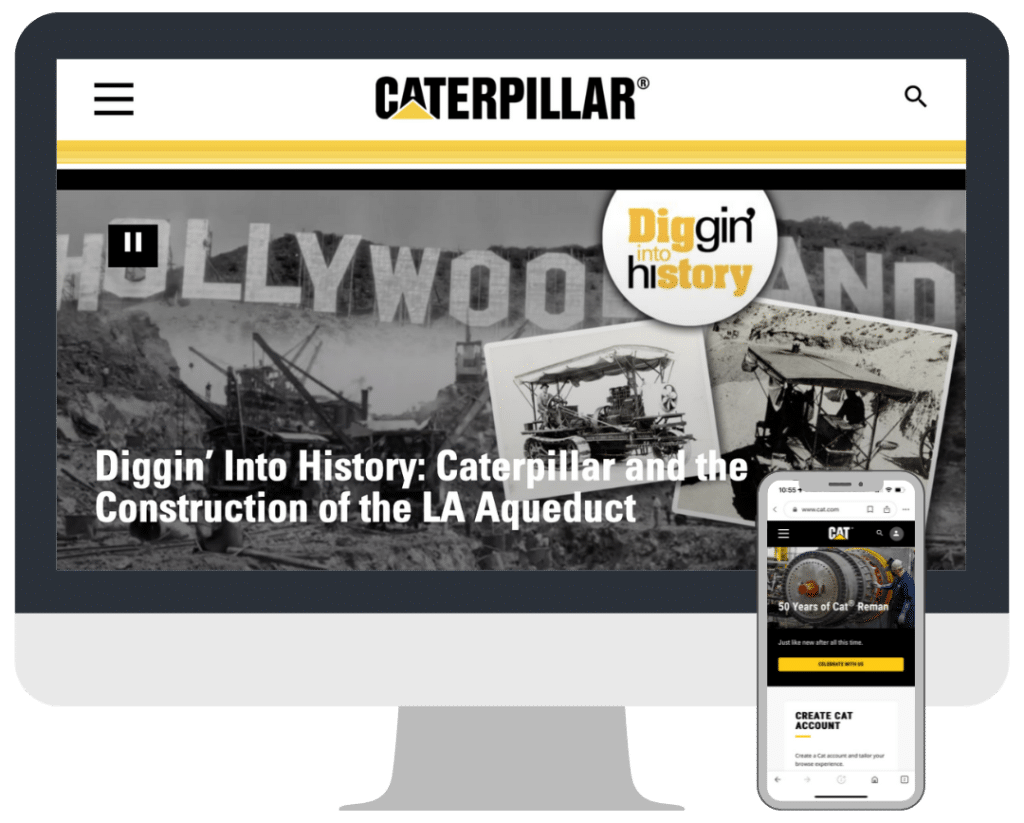
As an expert in website usability and user experience, I cannot stress enough the importance of designing a website that is easy for users to navigate and interact with.
The usability of a website can greatly impact the overall user experience, which in turn can affect the success of a business. To create a user-friendly website, it is important to consider its design, layout, functionality, and accessibility.
By prioritizing website usability and user experience, businesses can increase customer satisfaction, improve brand loyalty, and drive more conversions.
Information Architecture and Your Website Redesigning Project
When designing a website or application, the structure and organization of information are crucial to ensure that users can easily navigate and find what they are looking for. This is where information architecture comes into play.
This takes us back to the above, determining the content and structure of your website that are aligned with your buyers.
As an expert in this field, I understand the principles and best practices for designing effective information architecture. From conducting user research and developing personas to creating sitemaps and wireframes, every process step is carefully considered to create a seamless user experience.
Businesses can improve user satisfaction, increase engagement, and drive conversions by investing in proper information architecture. Let me help you optimize your digital presence through effective information architecture.
Affordable SEO Solutions That Drive Real Results
Matrix Marketing Group Delivers Customized SEO Strategies with Transparent Pricing for Maximum ROI. See SEO Services.
Website Navigation is Important.
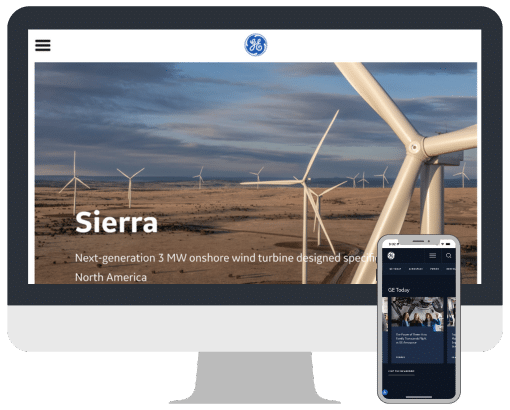
Effective website navigation is one of the most important elements of a successful website. Visitors can become frustrated and quickly leave your website without logical and easy-to-use navigation. Site navigation is vital in your website redesigning project.
As an expert in website development, I can attest that organizing your website’s menus clearly and concisely helps users find what they need quickly and effortlessly. Optimizing your navigation for mobile devices can make a big difference in user experience.
A well-constructed navigation system can positively impact user engagement and improve your website’s search engine optimization (SEO). User experience is the key to the long-term success of your website, and it all begins with good navigation design.
Conversion rate optimization and metrics
Conversion rate optimization and metrics are critical to any successful online marketing campaign. As an expert in the field, many factors can influence the success of your conversion efforts. Any website redesign project must have KPIs and metrics in place.
These may include anything from your website’s design and functionality to your checkout process’s usability. By focusing on key metrics such as click-through, bounce, and exit rates, you can identify improvement areas and make data-driven decisions to boost your conversion rates.
With the right approach and a solid understanding of the metrics that matter, you can drive more leads, sales, and revenue for your business.
Best Content Management System (CMS) Platforms
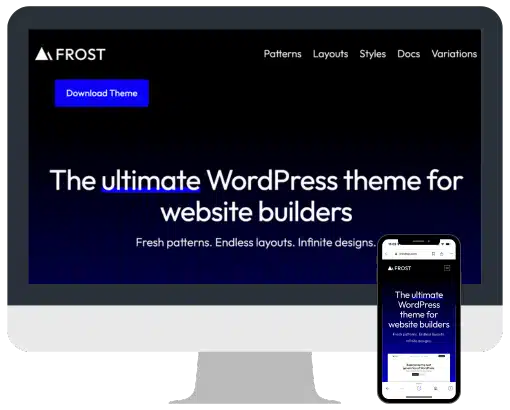
Choosing the right CMS platform is crucial when managing your website’s content. And as an expert in the field, several top contenders exist.
WordPress, for example, is a popular choice for its user-friendly interface and vast plugin library. On the other hand, Drupal is known for its robust customization options and scalability. Joomla sits in the middle, offering both ease of use and customization options.
Popular sites using WordPress from Recent Website Redesigning
- WordPress.org
- Vimeo.com
- WordPress.com
- Mozilla.org
- Digicert.com
- Gravatar.com
- Apache.org
- Soundcloud.com
- W3.org
- Zoom.us
The best CMS platform for your specific needs will depend on your budget, technical expertise, and desired level of control.
Considering these considerations, consider consulting with a professional to help you make the best decision for your business.
Website redesign examples and a website redesign case study.
Why a Custom Website Design is Best from Matrix Marketing Group
As a team of experts in digital marketing, Matrix Marketing Group knows that a custom website design is the best way to showcase your unique brand and stand out in a crowded online marketplace. We take on industry-focused website redesigning projects paired with our AI technology.
Our designers work closely with each client to create a website that is visually stunning, user-friendly, and optimized for search engines. Unlike a template website, a custom design allows complete control over the design elements, ensuring that your website accurately reflects your brand’s identity and objectives.
With Matrix Marketing Group’s custom website design services, you can rest assured that your online presence will truly reflect your business’s values and goals.
E-commerce Website Redesigning
Companies need to keep up with the times as technology continues to evolve. One way to do this is through a website redesign.
E-commerce websites, in particular, need to be user-friendly, visually appealing, and easy to navigate. As an expert in the field, I know that a redesign can help to increase sales and improve the overall customer experience.
By staying current with the latest trends and implementing the right features, a redesigned e-commerce website can significantly impact a company’s bottom line.
It may seem daunting, but with the right guidance and expertise, the transformation can be seamless, and the results can be game-changing.
Important landing page design
Effective landing page design is crucial for businesses today. A well-designed landing page can increase conversions, generate leads, and drive sales.
As an expert in the field, I’ve seen firsthand how even small changes to a landing page design can greatly impact its effectiveness. A good landing page should have a clear, concise message, a strong call to action, and a user-friendly layout.
It’s important to balance aesthetics and functionality and continually test and refine the design to optimize its performance. A great landing page can distinguish between success and failure in today’s fast-paced digital marketplace.
Creating an effective landing page design involves combining user experience (UX), visual appeal, and persuasive messaging to encourage visitors to take the desired action, such as signing up for a newsletter, downloading a resource, or purchasing. Here are some key principles and steps to create an optimized landing page design:
- Define your goal: Clearly outline the objective of your landing page. Your design and content should be focused on achieving this goal and guiding users toward the desired action.
- Please keep it simple and focused: Use a clean and straightforward design to avoid clutter and distractions. Minimize navigation options and use whitespace to guide users’ attention to your call-to-action (CTA).
- Craft a compelling headline: Your headline should be attention-grabbing and communicate your value proposition succinctly. Ensure it is clear, concise, and relevant to your target audience.
- Use persuasive and concise copy: Your landing page content should be clear, concise, and persuasive. Use bullet points or short paragraphs to make the content easily digestible. Focus on the benefits and features of your offering and address any potential objections.
- Incorporate strong visuals: Use high-quality images, videos, or illustrations to support your message and connect your audience emotionally. Ensure your visuals are relevant and complementary to your overall design and content.
- Optimize your call-to-action (CTA): Your CTA should be prominent, clear, and action-oriented. Consider the placement and size of your CTA to maximize visibility and conversions. Use contrasting colors to make the CTA button stand out, and use persuasive language to encourage users to take action.
- Utilize social proof: Incorporate testimonials, case studies, or trust badges to build credibility and trust with your audience. This can reassure visitors and increase their likelihood of taking the desired action.
- Ensure mobile-friendliness: Optimize your landing page for mobile devices by using responsive design and ensuring all elements are easily navigable on smaller screens.
- Test and optimize: Use A/B testing to evaluate design elements, headlines, CTAs, and other variables to determine what works best for your audience. Continuously analyze your data and make improvements to maximize conversion rates.
- Track and measure performance: Implement analytics tracking to monitor the performance of your landing page. Use key performance indicators (KPIs) such as conversion rate, bounce rate, and time on page to gauge success and identify areas for improvement.
Remember that an effective landing page design is an ongoing process. Continuously test, analyze, and optimize your design to ensure it remains relevant, engaging, and successful in achieving your goals.
Search engine optimization (SEO) and optimization
In today’s digital age, having a strong online presence is vital to the success of any business. That’s where search engine optimization (SEO) comes in.
SEO is optimizing your website to rank higher on search engine results pages. Using relevant keywords and optimizing your website’s content and structure can attract more organic traffic and improve your website’s visibility.
SEO can help you reach a wider audience and boost your online reputation if done right. But SEO isn’t just about stuffing your website with keywords. It’s a complex process that requires research, analysis, and ongoing optimization to stay ahead of the competition.
What are The Types of SEO Tactics You Can Use?
There are several SEO tactics you can use to improve your website’s visibility, including:
- Optimizing page titles, descriptions, and content for the relevant keywords.
- Using backlinks from authoritative websites to help get your content indexed by search engines.
- Develop a strong internal linking structure to make it easier for search engines to crawl and index your pages.
- Researching competitors and understanding their SEO strategy.
- Creating quality content for your audience
These are just a few of the tactics you can use to optimize your website for search engines, but the key is to have an overall plan and continuously monitor your progress so that you can make adjustments as needed.
By investing in SEO, you can ensure that your website is visible to more potential customers.
Applications of AI in Marketing
Generative AI: Tools like ChatGPT, Gemini, and OrchestraAI are being utilized for content creation, with 42% of marketers employing AI for keyword research and 39% for social media and email marketing. Learn More.
Accessibility and ADA compliance
The Americans with Disabilities Act (ADA) was signed into law in 1990 to ensure that people with disabilities have the same opportunities. Everyone deserves equal access to public buildings and spaces, regardless of their physical abilities. That’s why accessibility and ADA compliance are so important.
This includes everything from accessible entrances and ramps to accommodations for those with visual and hearing impairments. By making accommodations for those with disabilities, we create a more inclusive society that benefits everyone.
As technology advances, we must continue to advocate for accessibility and ADA compliance online. Let’s work together to make the world a more accessible place.
User interface (UI) design
As an expert in user interface (UI) design, I understand this aspect’s significant role in creating a seamless user experience.
A well-designed UI should be intuitive, visually appealing, and easy to navigate. It should allow users to interact with a system, product, or service efficiently and effectively.
Every little detail contributes to the overall UI design, from selecting colors and typography to deciding on the placement of buttons and menus.
By paying attention to these elements and knowing how to implement them effectively, a UI designer can create an experience that is visually appealing but also functional and enjoyable to use.
70% of agencies need help integrating AI solutions.
70% of agencies need help integrating AI solutions into their tech stack, citing a lack of interoperability as a major barrier. 85% of marketing agencies need more in-house expertise to manage and deploy multi-AI agent systems effectively.
Web design Agency and Website Rebranding by Matrix Marketing Group
Transforming your website to reflect your organization’s true identity is difficult. Fortunately, Matrix Marketing Group, a website redesign company, is here to guide you through website rebranding and website redesigning projects.
Their web design experts and marketing strategists are devoted to creating a unique, visually appealing, and functional website that resonates with your target audience. They take the time to understand your organization’s purpose, stakeholders, and goals to create a website that reflects your brand and is a conversion machine.
With Matrix Marketing Group, you’re assured of a seamless, stress-free, and rewarding website redesign experience. Trust them to take your website to new heights.
Conclusion on Website Redesigning
A website redesign is essential to maintain the performance of any website and should always be done with a defined set of objectives. It requires understanding what users want and how best to deliver an efficient and tailored user experience that works well on all devices.
Quality web design, modern UI & UX design elements, responsiveness, mobile-friendly layout, SEO audit & research, and usability analysis must be considered when revamping or redesigning a website. Frost theme offers excellent features such as responsive design adaptability, SEO & analytics integration, and lightweight, optimized code, which makes it an ideal choice for website makeovers or revamps.
Writing a website redesign proposal for website redesign services can be confusing.
Following the Ultimate Website Redesigning Guide for Better Performance outlined in this article, we hope you can confidently upgrade your current website structure and design per your desired outcomes.
So go ahead and get started now – remember to get a free website audit here to monitor the progress of your efforts!
Shifting from Lead Generation to Revenue Generation: A New Era for Marketing Managers
Unlocking 67% More Revenue: The Shift Every Marketing Manager Needs to Make
In today’s fast-paced digital landscape, marketing managers are bombarded with new strategies and tools claiming to revolutionize their approach. This statistic is not just a number—it’s a call to action for marketing leaders to reevaluate their strategies and realign their efforts with the bottom line. Schedule an appointment.
General FAQs about Website Redesigning
What makes an AI digital marketing agency the best choice for redesigning a website?
An AI digital marketing agency is the ideal choice for website redesign projects because they are experts in both design and marketing. With their user experience and UI design knowledge, they can create a visually appealing and functional website that resonates with your target audience. They can also provide valuable insights into making the website more effective for marketing purposes, such as optimizing it for search engine rankings and increasing conversions.
What is included in a website rebranding package?

A website rebranding package typically includes an audit of the current website, a design concept based on the audit findings, coding and development work, testing of the new design, and launch optimization. It may also include content creation and SEO services if needed. Each package is tailored to fit the specific needs of each client.
How do I ensure my website remains ADA-compliant?

To ensure your website remains ADA compliant, you should regularly review and update your website’s content, design, and code. If you are unsure whether your website is ADA-compliant, various tools can help you assess it. Matrix Marketing Group also offers ADA Compliance services to ensure your website meets all applicable standards.
What measures should I take during a website redesign?

During a website redesign, you should consider the site’s usability and overall performance. To attract more visitors, ensure that content optimization, mobile-friendly navigation, accessibility features for people with disabilities, and search engine optimization (SEO) strategies are included.



